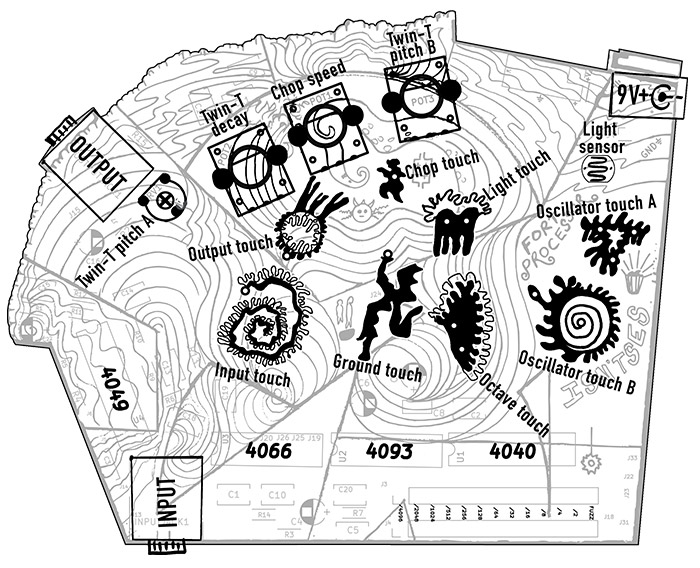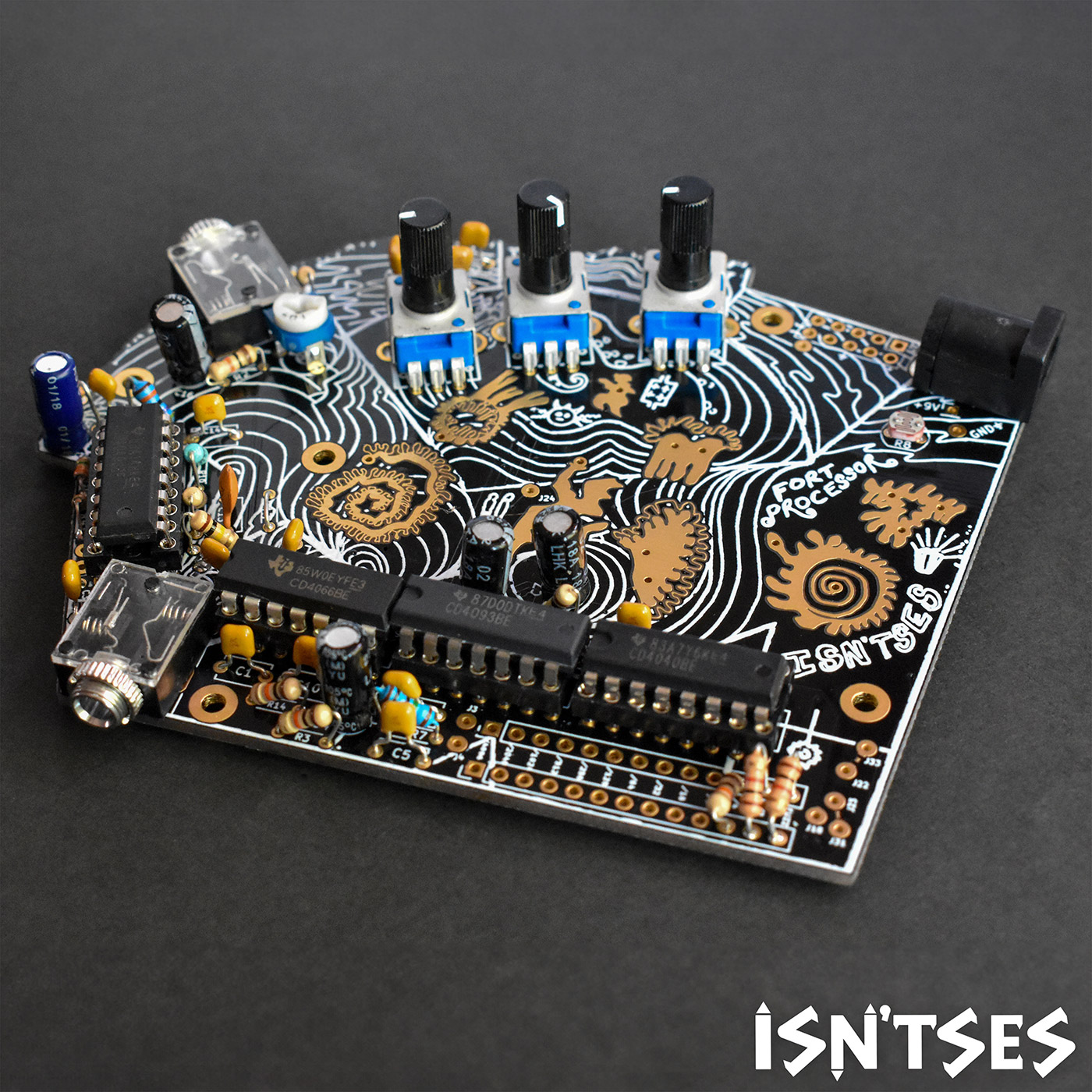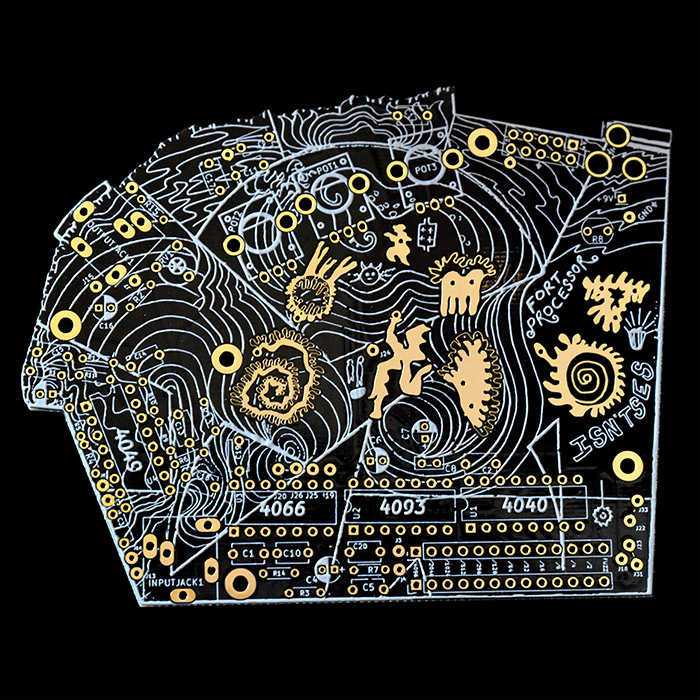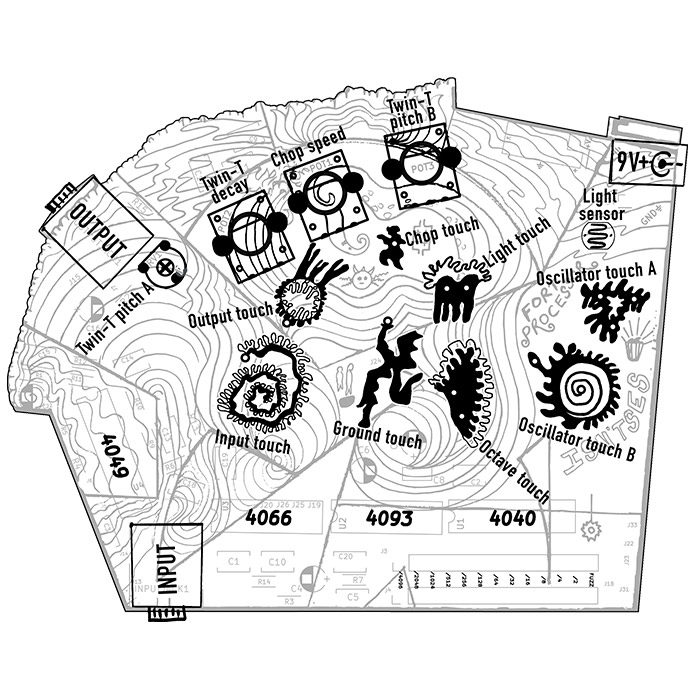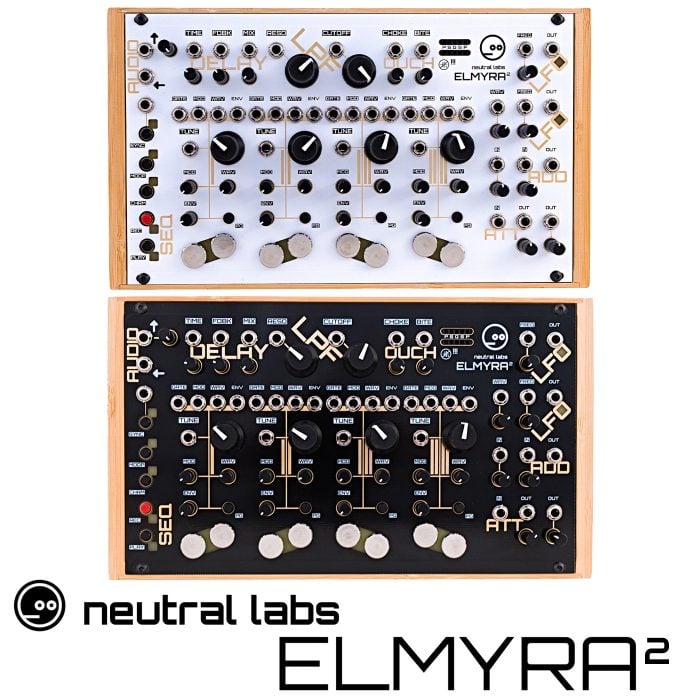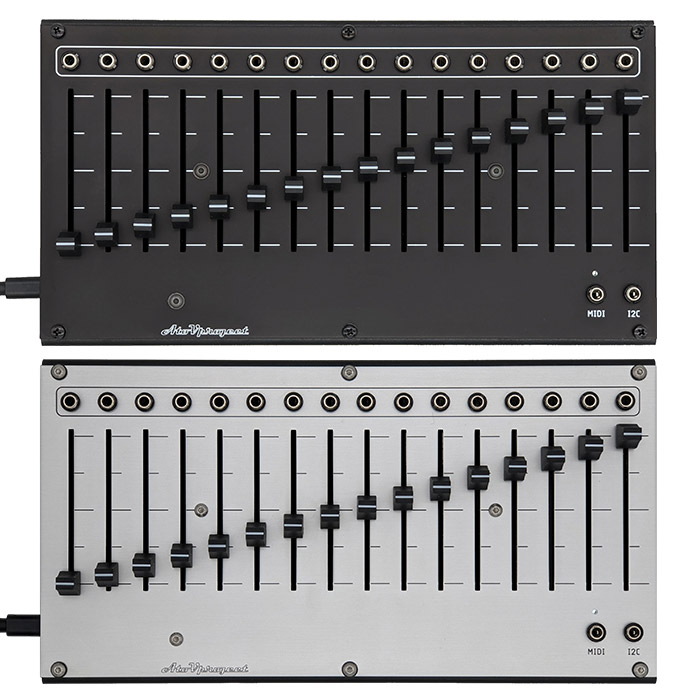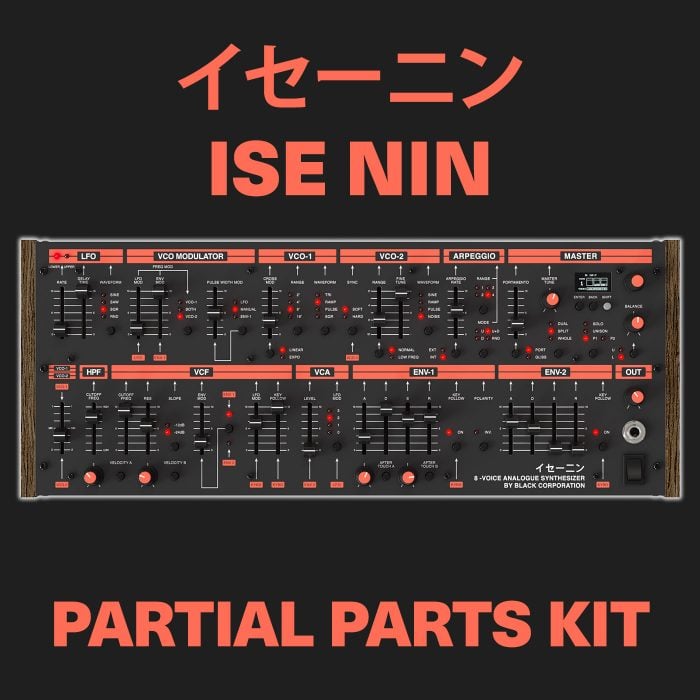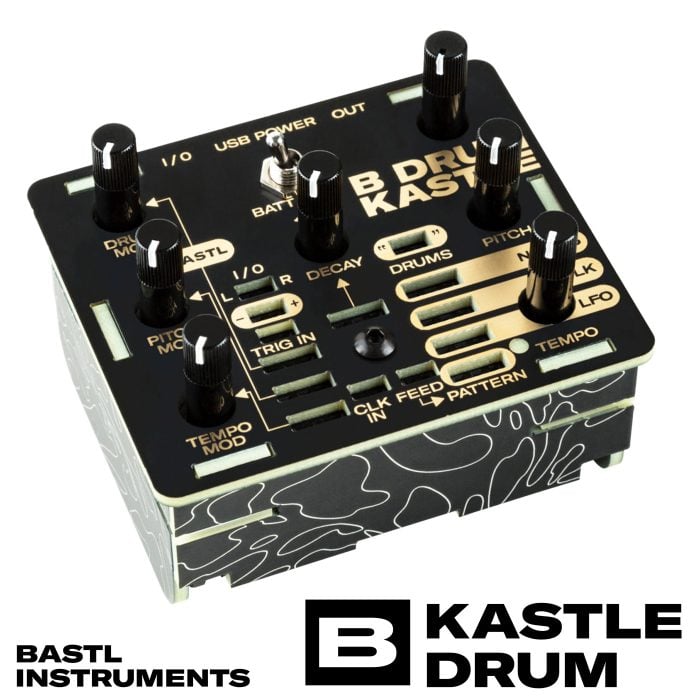Description
The Fort Processor is an experimental noise synthesiser and audio effect circuit designed by harsh fun noise duo ISN’TSES (Tim Drage & Lisa McKendrick) for Fort Process sound art festival. This event takes place in the tunnels and bunkers of Newhaven Fort on the Sussex coast, and the electronics and artwork of the synth are based on the layout of the site, with inspiration from the surrounding landscape and ocean.
The synth is controlled by light, touch pads, 3 knobs, and a trimmer. Audio is created and manipulated by four sections which have been combined using a circuit-bent approach:
1. The audio input, (3.5mm) used to connect devices such as a radio, walkman, phone, tablet, mp3, instrument etc. This signal is distorted using high gain then run through a frequency divider to add two noisy sub-octaves. When no input jack is connected, the circuit feeds back and self-oscillates.
2. Squarewave oscillators pitch-controlled by a Light Dependent Resistor located at the top right of the PCB. This LDR can be played by moving lights near it or by blocking the light. The resulting sound can be further modulated by the touch pads which are the metallic drawings across the middle of the circuit board. Touch two or more of these at once to alter the sound. This can be understood as a live circuit-bending effect.
3. A variable-speed chopper, controlled by the 2nd knob. This rapidly slices between the distorted input/feedback signal and the light-controlled squarewaves. Turning the knob changes the speed, creating various ring-modulation, tremolo and cut-up effects.
4. A bass oscillator/filter/beat/drone generator, mutated from the classic ‘Twin-T’ analog kick drum circuit. This is triggered and influenced by the audio input and is controlled by the 1st and 3rd knob in conjunction with the trimmer pot. Knob 1 controls the decay envelope; turned anticlockwise this produces more percussive sounds, while turning it clockwise makes bass drones. When turned fully-clockwise it gets quiet to allow the other noises to cut through. The 3rd knob and the trimmer pot interact with each other to control the pitch of this section. The trimmer can be gently turned with a small screwdriver and can be viewed as a tuner to achieve either a resonant drum-like sound, or a more continuous bass tone. The trimmer should be tweaked before playing according to each users personal preferences. Expect random and unpredictable results from this section according to how the rest of the sections are influencing it.
Input: The audio input is mono. You can use either a mono patch cable from a synth, or a stereo aux cable. With a stereo input note that only the left channel will be processed through the circuit.
Output: While the output signal is mono, if a stereo cable is used then the same audio will come out of both left and right channels. You can connect it to a stereo mixer/amp input using a minijack to 2x phono or 2x jacks Y-cable as appropriate.
The Fort Processor is powered by a standard 9v guitar pedal power supply: 3.5mm centre negative 9v DC (not included). Take great care never to use any other kind of power supply! There is no protection against reverse polarity, so if you accidentally plug in a centre-positive or an AC/AC power supply you will damage the circuit and at least have to replace the chips!
We recommend sticking small rubber feet on the underside of the PCB, or screw it to a wood/cardboard/plastic base or box using the holes. Alternatively place it on a soft and non-conductive surface such as fabric, rubber or wood. Do not place on a metal surface.
Visit http://isntses.co.uk/blog for more background and information about this circuit, including possible modifications.
Build Document – Assembly Guide
